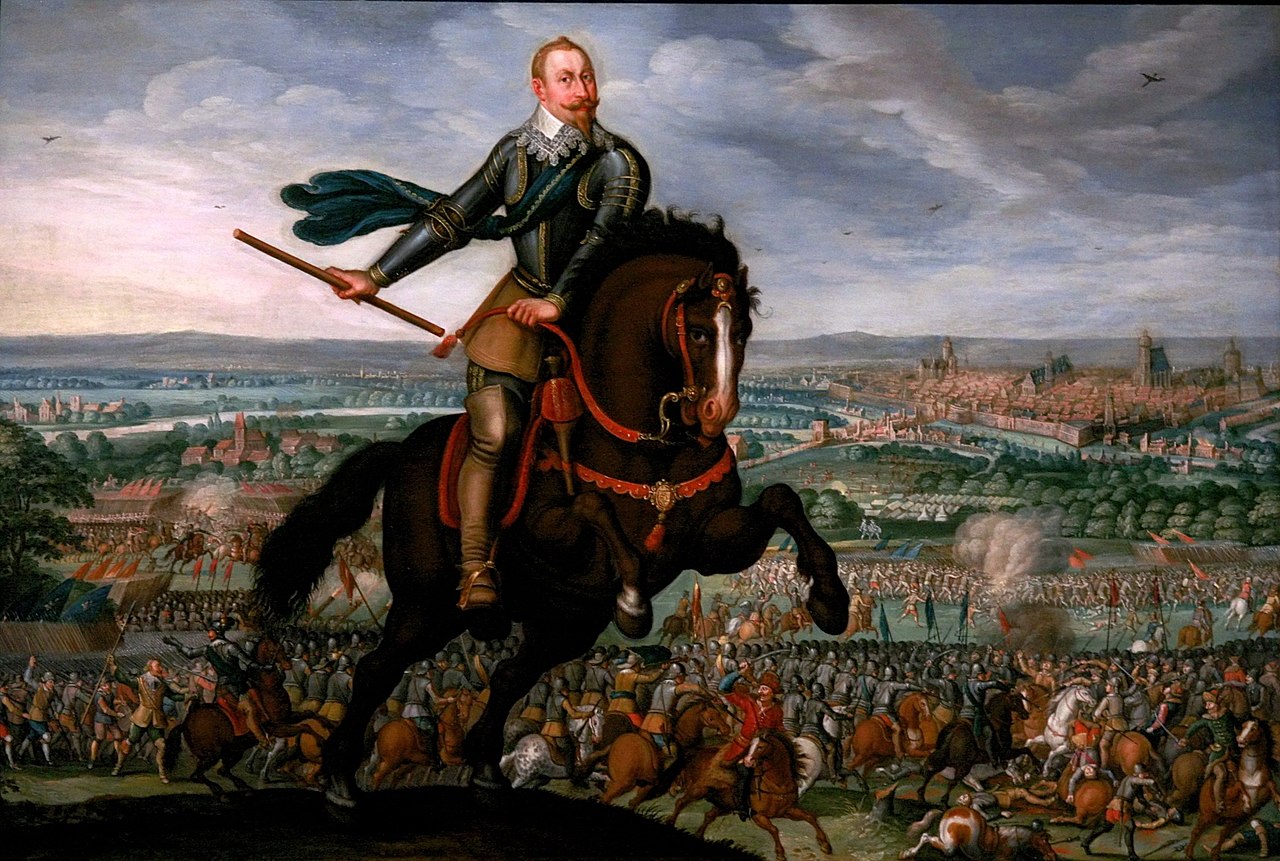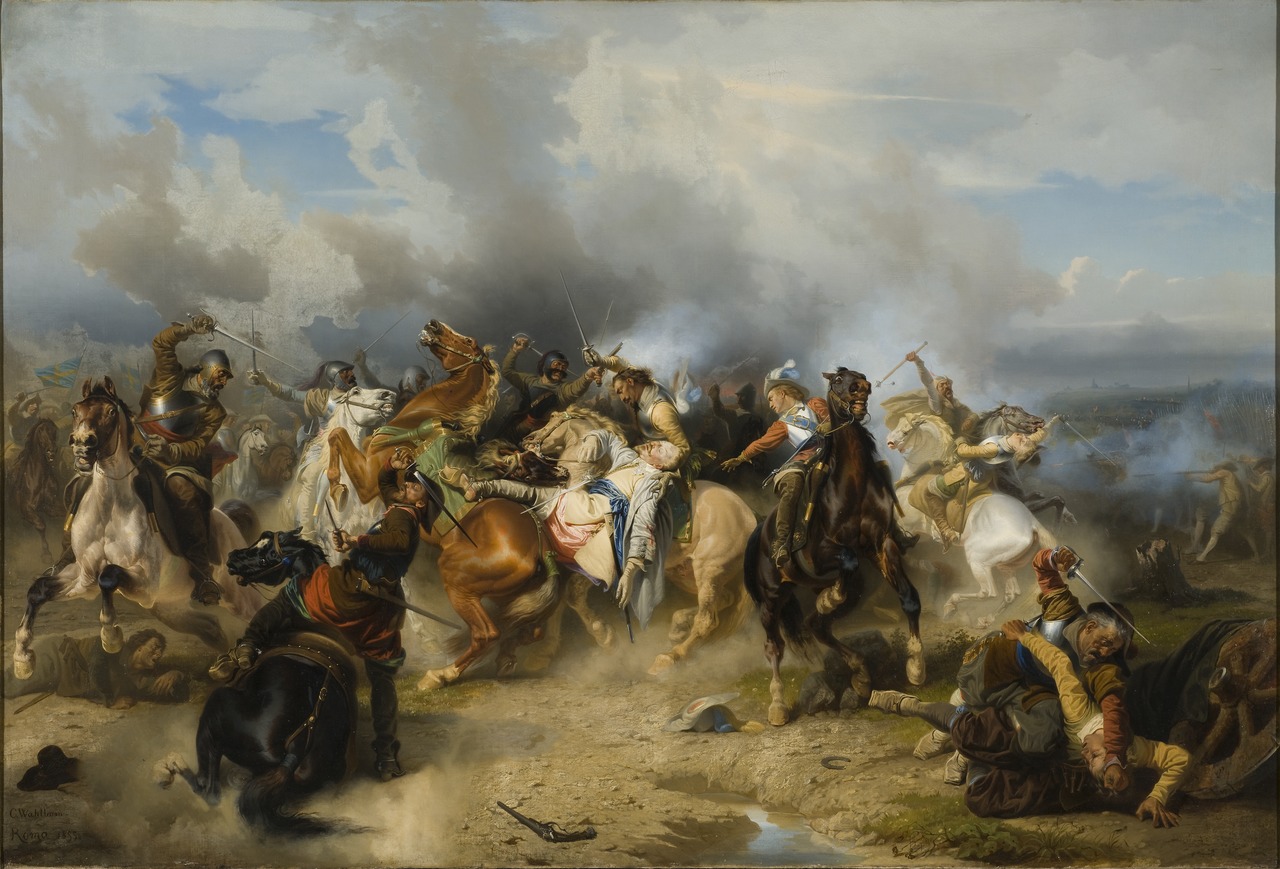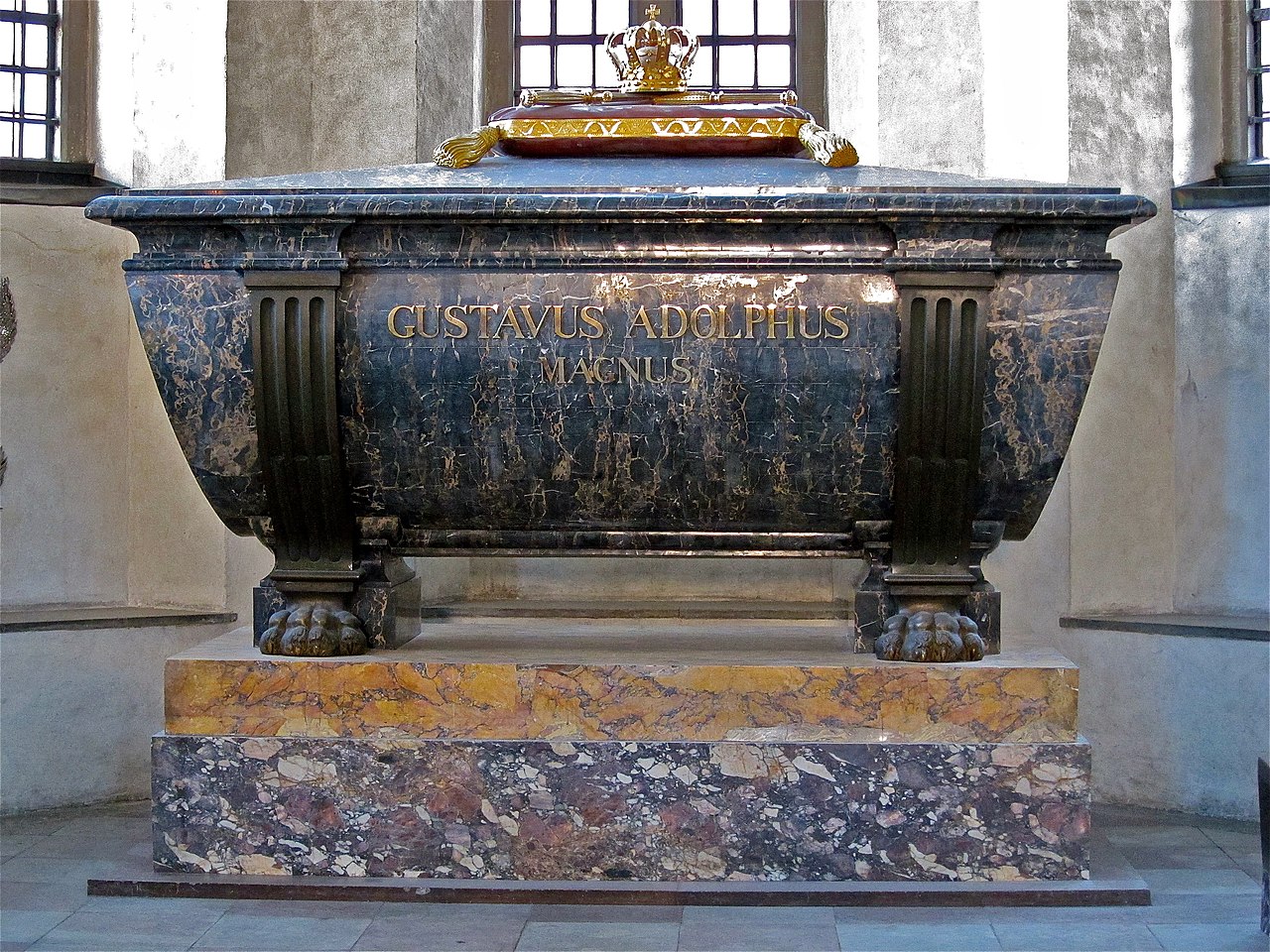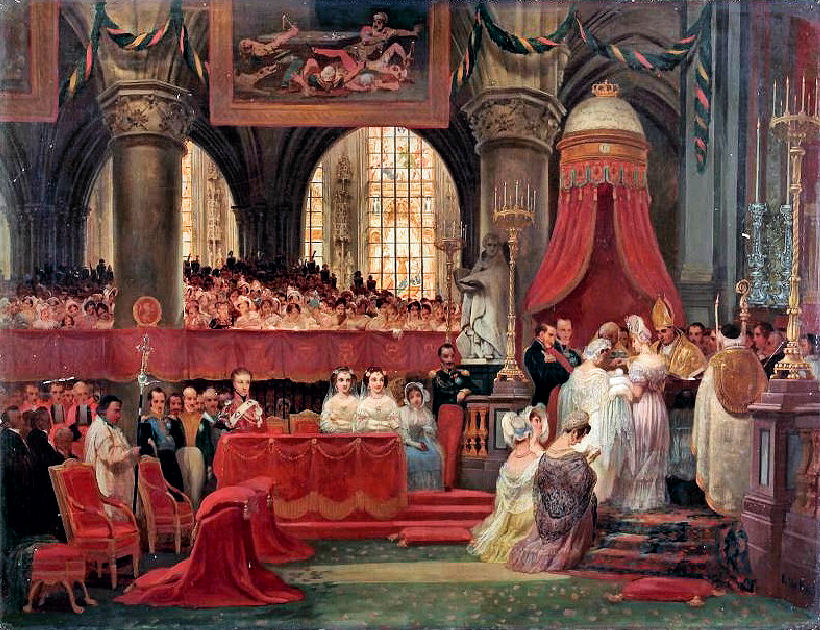by Susan Flantzer
© Unofficial Royalty 2021
The Three Christiansborg Palaces

Christiansborg Palace – The dome of the Palace Chapel can be seen on the left; Credit – Af Julian Herzog (Website) – Eget arbejde, CC BY 4.0, https://commons.wikimedia.org/w/index.php?curid=36694087
Christiansborg Palace Chapel, part of Christiansborg Palace, belongs to the Evangelical Lutheran Church in Denmark, sometimes called The Church of Denmark, the established, state-supported church in Denmark. Christiansborg Palace, located on the islet of Slotsholmen in central Copenhagen, Denmark, was once a royal residence but now it is a government building. It is the seat of the Danish Parliament, the Danish Prime Minister’s Office, and the Supreme Court of Denmark. Several parts of Christiansborg Palace are still used by the Danish monarch and the royal family, including the Royal Reception Rooms, the Palace Chapel, and the Royal Stables.
- The Danish Parliament: The History of Christiansborg Palace
- The Danish Monarchy: Christiansborg Palace

Copenhagen Castle in 1698; Credit – Wikipedia
Prior to the three Christiansborg Palaces that have been on the site, there were two other castles. Absalon’s Castle was built in 1167 by Absalon, a Roman Catholic archbishop and statesman. The castle was demolished in 1370 when King Valdemar IV was defeated in a conflict with the Hanseatic League, who ordered the castle to be demolished. After the demolition of Absalon’s Castle, Copenhagen Castle was built and completed in the late 14th century. Originally Copenhagen Castle was the property of the Bishop of Roskilde until King Eric VII took over the rights to the castle in 1417. Copenhagen Castle then became the principal residence of the Danish kings and the center of government. In 1731, Copenhagen Castle was demolished to make room for the first Christiansborg Palace.

The first Christiansborg Palace; Credit – Wikipedia
The first Christiansborg Palace was commissioned by King Christian VI in 1733. Most of the palace complex was completed in 1745 and it was the largest palace in northern Europe at the time. The palace and chapel were destroyed by a fire in 1794.

The second Christiansborg Palace; Credit – Wikipedia
After the 1794 fire, the Danish royal family lived at Amalienborg Palace in Copenhagen. The second Christiansborg Palace was started in 1803. By the time the palace was finished in 1828, King Frederik VI decided he did not want to live there and he only used the palace for entertainment. King Frederik VII was the only monarch to live there, between 1852 – 1863. The second Christiansborg Palace burned down in 1884, however, the riding school, the court theatre, and the palace chapel were saved. The ruins remained for twenty-three years due to political fighting over the plans for a third Christiansborg Palace.
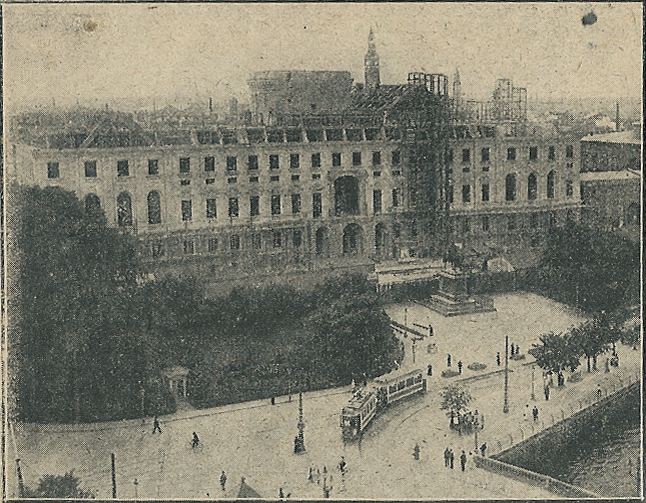
The third Christiansborg Palace under construction in 1914; Credit – Wikipedia
The third Christiansborg Palace was built from 1907 – 1928, with premises for the Parliament and the Supreme Court and royal reception rooms for the Danish royal family to be used for official functions of the monarch such as banquets, state dinners, the New Year’s levée, diplomatic accreditations, audiences, and meetings of the council of state.
Christiansborg Palace Chapel

Today’s Christiansborg Palace Chapel; Credit – Wikipedia
The history of the Christiansborg Palace Chapel goes back to the first palace. The palace chapel was not in the palace itself but rather in a separate building connected to the palace by a walkway. Architect Nicolai Eigtved designed the interior of the chapel in the Rococo style. The new palace chapel was consecrated on Sunday, November 27, 1740, and was then used for the regular services for the palace’s many residents and for the large services that accompanied anniversaries and events of the royal family.

The 1794 Christiansborg Palace Fire; Credit – Wikipedia
On February 26, 1794, a fire broke out in a chimney in the Crown Prince’s rooms in the main wing. The fire spread over the next few hours, and a large crowd attempted to save the castle and its valuable contents and also the surrounding neighborhoods. The palace and the palace chapel were destroyed and 70-80 people were killed.
Embed from Getty Images
The interior of the Christiansborg Palace Chapel
Originally the entire palace chapel was to be razed, however, it was decided to rebuild the palace chapel on the site of the previous palace chapel using a large portion of the original exterior walls and partitions. Architect Christian Frederik Hansen was responsible for the reconstruction and transformed what remained of the first palace chapel into a neoclassical building with a dome. The work began in 1813 and was completed in 1826. The new palace chapel was consecrated at a service on May 14, 1826, as part of the 1000th anniversary of the introduction of Christianity in Denmark.
The second fire at Christiansborg Palace occurred on October 3, 1884. Although the second Christiansborg Palace had firewalls, iron doors, and firefighting equipment installed, the building had many spaces through which the fire could spread. The fire spread along the main wing and the east wing, and after a while, the firefighters gave up trying to save the palace and instead concentrated their efforts on saving the palace chapel and the riding arena complex. Both the palace chapel and the riding arena complex were saved.

Interior of the Christiansborg Palace Chapel showing the domed ceiling; Credit – By seier+seier – c.f.hansen, christiansborg palace church, copenhagen, 1810-1826Uploaded by Anne-Sophie_Ofrim, CC BY 2.0, https://commons.wikimedia.org/w/index.php?curid=12086401
On June 7, 1992, the palace chapel roof caught fire from fireworks set off during the Whitsun carnival. The roof burned, the dome collapsed, and a substantial part of the interior was destroyed. There were no architectural drawings for the dome and roof construction, but systematic building archeological work using the charred building parts made it possible to recreate the dome and roof construction. Historically correct construction methods were used throughout the reconstruction process. After the restoration, the Christiansborg Palace Church was rededicated on January 15, 1997, in connection with Queen Margrethe II‘s Silver Jubilee.
Royal Events at Christiansborg Palace Chapel
The christening of Crown Prince Christian, son of King Frederik X, grandson of Queen Margrethe II in 2006
- 1746 – Lying in state of King Christian VI
- 1752 – Lying in state of Louisa of Great Britain, Queen of Denmark
- 1765 – Confirmation of the future King Christian VII
- 1766 – Lying in state of King Frederik V
- October 1, 1766 – Wedding of King Christian VII and Princess Caroline Matilda of Wales
- November 8, 1766 – Proxy wedding of Princess Sophia Magdalena (daughter of Frederik V) and the future Gustav III, King of Sweden
- 1767 – Anointing of King Christian VII and Caroline Matilda of Wales, Queen of Denmark
- 1770 – Lying in state of Sophia Magdalene of Brandenburg-Kulmbach, Queen of Denmark
- 1784 – Confirmation of the future King Frederik VI
- 1785 – Confirmation of Princess Louise Augusta (daughter of Christian VII)
- May 27, 1786 – Wedding of Princess Louise Augusta (daughter of Christian VII ) and Friedrich Christian II, Duke of Schleswig-Holstein-Sonderburg-Augustenburg
- 1826 – Confirmation of the future King Frederik VII
- November 1, 1828 – Wedding of the future King Frederik VII and Princess Vilhelmine Marie of Denmark (daughter of Frederik VI)
- 1835 – Confirmation of the future King Christian IX
- 1860 – Confirmation of the future King Frederik VIII and his sister Princess Alexandra, the future Queen Consort of the United Kingdom (children of Christian IX)
- 1870 – Christening of the future King Christian X
- December 21, 1878 – Wedding of Princess Thyra (daughter of Christian IX) and Crown Prince Ernst August of Hanover
- 1887 – Confirmation of the future King Christian X and his brother Prince Carl, the future King Haakon VII of Norway (children of Frederik VIII)
- 1891 – Confirmation of Princess Louise (daughter of Frederik VIII)
- 1894 – Confirmation of Prince Harald (son of Frederik VIII)
- 1896 – Confirmation of Princess Ingeborg and Princess Thyra (daughters of Frederik VIII)
- August 27, 1897 – Wedding of Princess Ingeborg (daughter of Frederik VIII) and Prince Carl of Sweden
- 1904 – Confirmation of Prince Aage and Prince Axel (sons of Prince Valdemar, grandsons of Christian IX)
- 1904 – Confirmation of Prince Gustav (son of Frederik VIII)
- 1906 – Lying in state of King Christian IX
- 1908 – Confirmation of Prince Erik (son of Prince Valdemar, grandson of Christian IX)
- 1908 – Confirmation of Princess Dagmar (daughter of Frederik VIII)
- 1912 – Lying in state of King Frederik VIII
- 1930 – Confirmation of Princess Alexandrine-Louise (daughter of Prince Harald, granddaughter of Frederik VIII)
- 1934 – Confirmation of Prince Gorm (son of Prince Harald, grandson of Frederik VIII)
- 1935 – Confirmation of Prince George Valdemar (son of Prince Axel, grandson of Prince Valdemar)
- January 22, 1937 – Wedding of Princess Alexandrine-Louise (daughter of Prince Harald, granddaughter of Frederik VIII) and Count Luitpold of Castell-Castell
- 1937 – Confirmation of Prince Flemming (son of Prince Axel, grandson of Prince Valdemar)
- 1947 – Lying in state of King Christian X
- 1972 – Lying in state of King Frederik IX
- 2000 – Lying in state of Ingrid of Sweden, Queen of Denmark
- 2006 – Christening of Crown Prince Christian (son of Frederik X, grandson of Margrethe II)
- 2018 – Lying in state and funeral of Prince Henrik (born Henri de Laborde de Monpezat, husband of Margarethe II)

The funeral of Prince Henrik, husband of Queen Margrethe II in 2018; Credit – Keld Navntoft, Kongehuset
This article is the intellectual property of Unofficial Royalty and is NOT TO BE COPIED, EDITED, OR POSTED IN ANY FORM ON ANOTHER WEBSITE under any circumstances. It is permissible to use a link that directs to Unofficial Royalty.
Works Cited
- Da.wikipedia.org. 2021. Christiansborg – Wikipedia, den frie encyklopædi. [online] Available at: <https://da.wikipedia.org/wiki/Christiansborg> [Accessed 20 August 2021].
- Da.wikipedia.org. 2021. Christiansborgs brand 1884 – Wikipedia, den frie encyklopædi. [online] Available at: <https://da.wikipedia.org/wiki/Christiansborgs_brand_1884> [Accessed 20 August 2021].
- Da.wikipedia.org. 2021. Christiansborg Slotskirke – Wikipedia, den frie encyklopædi. [online] Available at: <https://da.wikipedia.org/wiki/Christiansborg_Slotskirke> [Accessed 20 August 2021].
- Da.wikipedia.org. 2021. Kongelige bryllupper – Wikipedia, den frie encyklopædi. [online] Available at: <https://da.wikipedia.org/wiki/Kongelige_bryllupper#Danmark> [Accessed 20 August 2021].
- En.wikipedia.org. 2021. Christiansborg Palace – Wikipedia. [online] Available at: <https://en.wikipedia.org/wiki/Christiansborg_Palace> [Accessed 20 August 2021].
- The Danish Monarchy. 2021. Christiansborg Palace. [online] Available at: <https://www.kongehuset.dk/en/palaces/christiansborg-palace> [Accessed 20 August 2021].
- The Danish Parliament. 2021. The History of Christiansborg. [online] Available at: <https://www.thedanishparliament.dk/en/christiansborg-palace/the-history-of-christiansborg-palace> [Accessed 20 August 2021].





